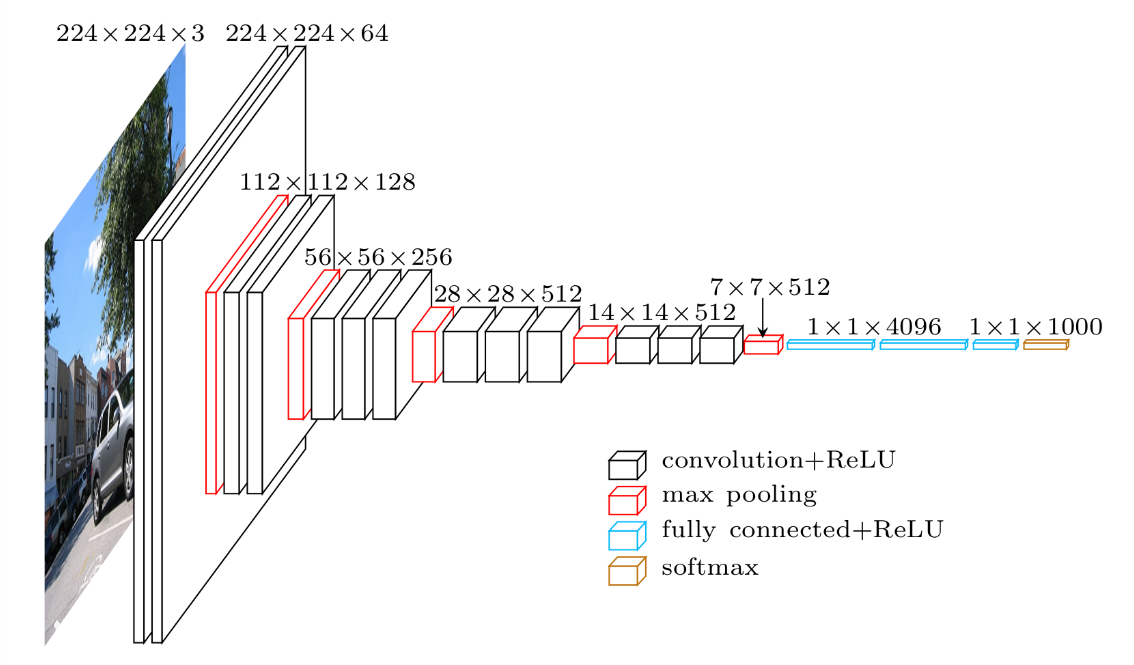11. Fully-Connected Layers, VGG-16
VGG-16 Architecture
Take a look at the layers near the end of this model; the fully-connected layers that come after a series of convolutional and pooling layers. Take note of their flattened shape.

VGG-16 architecture
Fully-Connected Layer
A fully-connected layer's job is to connect the input it sees to a desired form of output. Typically, this means converting a matrix of image features into a feature vector whose dimensions are 1xC, where C is the number of classes. As an example, say we are sorting images into ten classes, you could give a fully-connected layer a set of [pooled, activated] feature maps as input and tell it to use a combination of these features (multiplying them, adding them, combining them, etc.) to output a 10-item long feature vector. This vector compresses the information from the feature maps into a single feature vector.
Softmax
The very last layer you see in this network is a softmax function. The softmax function, can take any vector of values as input and returns a vector of the same length whose values are all in the range (0, 1) and, together, these values will add up to 1. This function is often seen in classification models that have to turn a feature vector into a probability distribution.
Consider the same example again; a network that groups images into one of 10 classes. The fully-connected layer can turn feature maps into a single feature vector that has dimensions 1x10. Then the softmax function turns that vector into a 10-item long probability distribution in which each number in the resulting vector represents the probability that a given input image falls in class 1, class 2, class 3, … class 10. This output is sometimes called the class scores and from these scores, you can extract the most likely class for the given image!
Overfitting
Convolutional, pooling, and fully-connected layers are all you need to construct a complete CNN, but there are additional layers that you can add to avoid overfitting, too. One of the most common layers to add to prevent overfitting is a dropout layer.
Dropout layers essentially turn off certain nodes in a layer with some probability, p. This ensures that all nodes get an equal chance to try and classify different images during training, and it reduces the likelihood that only a few, heavily-weighted nodes will dominate the process.
Now, you're familiar with all the major components of a complete convolutional neural network, and given some examples of PyTorch code, you should be well equipped to build and train your own CNN's! Next, it'll be up to you to define and train a CNN for clothing recognition!